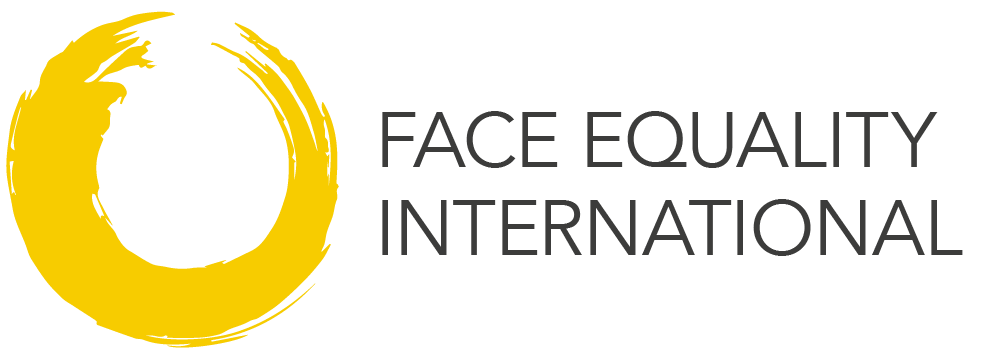
A Hidden Community: The Movement for Face Equality
Facial disfigurement is a globally neglected human rights issue
By Phyllida Swift and Kathleen Bogart
Psychology Today regularly covers disability and ableism as neglected issues within greater human rights movements. A recent article we co-wrote makes a further point that facial disfigurement is even more neglected. Our article in the Journal of Oral Biology and Craniofacial Research reveals the inequalities experienced by people around the world who are living with facial disfigurements. Set alongside medical and academic research articles, this piece speaks to the injustices and challenges experienced by the disfigurement community that go beyond medical needs.
This is a call to readers to join the movement that addresses the holistic needs of individuals, families, and communities experiencing facial disfigurement. It’s a call to recognize the unique challenges posed by living in a society obsessed with perfect visages, one that sees people with facial differences as second-class citizens who ‘need to be fixed’, and which subjects such individuals to abuse, discrimination, and inequality.
Mental Health Disparities
While medical treatment can be one important pillar of well-being for people with facial disfigurement, psychosocial and human rights issues are independent pillars that are often forgotten. People with disfigurement are at high risk for distress including body dissatisfaction, anxiety, and depression. Much of this distress is caused by social stigma, which may be internalized into self-stigma and low self-esteem. Most people with disfigurement want support from a mental health professional with specialized experience in disfigurement; however, such training is rare. In the West, there are some specialist centers which offer psychosocial support for children with craniofacial conditions, and the UK charity Changing Faces, which offers extensive psychosocial support for people with disfigurement. There are few options for adults in the West and virtually none in developing countries. Mental healthcare treatment standards for many disfiguring conditions do not exist or have only recently been developed.

Human Rights for People with Facial Disfigurement
Face Equality International (FEI), an Alliance of worldwide organizations working to end the discrimination experienced by people with facial disfigurements, asserts that disfigurement is a neglected human rights issue. The pioneer behind the global face equality movement, FEI’s late founder James Partridge, knew all too well, as a burns survivor, what it was like to live in a ‘face-ist’ world.
Whether it’s the absence of a check-box stating ‘facial disfigurement’ in a diversity monitoring form, being told your experiences of hate online don’t breach social platforms community guidelines, or being told to toughen up and not take daily intrusive comments, stares, and questions to heart, the experiences of the facial difference community are consistently diminished, erased, and hidden.
‘Hidden’ is a core theme and the operative word when it comes to exploring the experiences of someone living with a disfigurement in a developing country, where the moral model of disability and disfigurement prevails — the idea that disfigurements are a mark of sin or a curse. People affected are prevented from attending school, seeking employment, or entering into relationships on the basis that they might scare others around them, or bring shame upon their families.
Is Facial Disfigurement a Disability?
Some facial disfigurements cause functional impairments that could be considered disabling, whereas others do not affect functioning at all, and the only disablement occurs via society. According to the social model of disability, social oppression of people with differences is the main factor in constructing disability. However, most people view disability from a medical or moral model, and it may not occur to them to include disfigurement in their conception of disability. Indeed, people with facial disfigurement themselves differ on whether they self-identify as disabled.
Language
Activists encourage the use of frank and open language to fight stigma. Social media movements encourage people to #SayTheWord disabled. The word “disability” is empowering because it is enshrined in civil rights laws such as the Americans with Disabilities Act. Similarly, Face Equality International opts to use the term “disfigurement” because it is enshrined in law and is a collective term which clearly captures the disadvantages the community experiences. Some prefer to use “facial difference” or “visible difference” as opposed to “disfigurement”. However, neither of these alternatives are legally or medically recognized, and they are potentially flawed in distinguishing the unique experience of the distinct community, in that we are all ‘visibly different’. We do, however, vary the use of language to be inclusive of differing cultures and perspectives, while enabling individuals to self-identify.
Hidden in the Legal Context
The theme of a hidden community extends to legal recognition. Equality laws exist on the grounds that marginalized groups require legal protection from discrimination, or “the practice of unfairly treating a person or group of people differently from other people or groups of people”. This definition should undeniably extend to the pervasive staring, comments, exclusion, and marginalization of the facial difference community. But in the eyes of the law, this community’s unique experiences are largely invalidated. Disfigurement protections are buried in disability-related laws based upon the medical model of disability, grounded in functional definitions of disability. The Americans with Disabilities Act includes “cosmetic disfigurement”, while the UK equality act, which includes disability protections, specifies that only severe disfigurement is included in protections, and what constitutes “severe” is unclear. Most legal protections worldwide do not explicitly include disfigurement.
Coming Out From Hiding
In summary, we are calling for greater recognition of facial difference, visible difference, disfigurement, or whatever your preferred terminology is, within wider equality and human rights movements. In order for disfigurement to emerge as an independent equality issue, and to come out from ‘hiding, it is imperative that:
- Healthcare and mental health professionals, academics, and society at large understand the social challenges and thereby the psychological impact of living with a visibly different face or body in today’s society, irrespective of where someone lives, cultural perspectives on difference, and what legal protections exist. This requires a holistic approach to healthcare that goes beyond surgical intervention and considers psychosocial needs.
- Greater education to counteract stigma around disfigurement, in a culturally relevant manner is required on a global scale. This is imperative in order to enable individuals to thrive across education, workplace, and wider societal environments.
- Clear, explicit, and inclusive legal protections that name disfigurement are required in order to empower individuals to assert such protections, and in order for the law to adequately protect and serve the disfigurement community as a marginalized minority group.
- Wider research which explores the experiences, prejudices, and injustices experienced by the community on a representative, global scale is required, along with work to mitigate it. People who have personal experience of disfigurement must be included in this process.
- The development sector, and efforts toward sustainable development, must consider not just physical healthcare for people with disfigurements, but also mental health care, human rights, and equality.
Phyllida Swift is CEO of Face Equality International. She has been a face equality activist since sustaining facial scars in a car accident in 2015. She is passionate about reshaping public perception of scars and facial differences, particularly in relation to media representation, which was the focus of her TEDX Talk.
Kathleen Bogart, Ph.D., is an Associate Professor of Psychology at Oregon State University. As a person with a disability, she is passionate about researching, educating, and writing about ableism, or disability prejudice. Her research focuses on the psychosocial implications of living with disability, rare disorders, or facial differences such as Moebius syndrome. An advocate for people with disabilities, she has served on the American Psychological Association Committee on Disability Issues in Psychology, the Rehabilitation Psychology editorial board, and the Moebius Syndrome Foundation Scientific Advisory Board.
Both authors sit on the AboutFace Lived Experience Advisory Panel (LEAP)
This blog was originally posted in Psychology Today, and is reposted here with permission from the authors.
